People: Partners
| Principal Investigators |
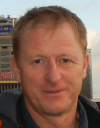
Martin Stuefer is a Research Professor at the Geophysical Institute, UAF, and the Director for HyLab and the Alaska Climate Research Center. His research interest is in the broad discipline of applied remote sensing and atmospheric sciences. Dr. Stuefer is also an instrument rated professional pilot with 40-years of accident-free flying experience, who is approved to operate aircraft on University of Alaska business. He pilots a modified Cessna 185 aircraft that is dedicated for HyLab's airborne data collection campaigns. Read more about his research at the ACRC site or contact him at mstuefer@alaska.edu
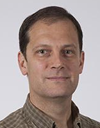
Don Hampton is a Research Associate Professor at the Geophysical Institute, UAF, and Optical Science Manager of the Poker Flat Research Range. His main interests are optical instrumentation, and their application to studying physical systems. Current applications include aurora and airglow, optical remote sensing from unmaned aerial vehicles, and space based instruments on the Deep Impact spacecraft observing stellar transits of known extra-solar planets and an upcoming flyby of comet Hartley-2. He can be reached at dhampton@alaska.edu
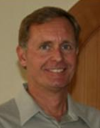
Tom Kampe is the Airborne Observatory Platform (AOP) Instrument Scientist responsible for the NEON imaging spectrometer and science algorithm development and validation. Prior to joining NEON, Inc., Tom was a Staff Consultant in Electro-Optics with Ball Aerospace & Technologies Corp., where he was instrumental in the design and development of earth remote sensing systems including Quickbird, CALIPSO, and conceptual designs for several ESSP missions. He can be reached at tkampe@neoninc.org

Dar A Roberts is a Professor in the Department of Geography at the University of California, Santa Barbara, where he currently serves as Chair. His research interests include imaging spectrometry, remote sensing of vegetation, spectroscopy of urban and natural cover, land-use/land-cover change mapping with satellite data, height mapping with lidar, fire danger assessment and, recently remote sensing of methane. He has worked with broad band and hyperspectral data since 1984, as well as with SAR data. He can be reached at dar@geog.ucsb.edu

Carl Schmitt is a Research Associate Professor at the Geophysical Institute of the University of Alaska Fairbanks. His research interest include cloud microphysics and the radiative impact of light absorbing particles on glaciers and snow. Dr. Schmitt is also a co-founder of the American Climber Science Program, a non-profit organization which conducts measurements of light absorbing particles on glaciers worldwide. Dr. Schmitt and Dr. Stuefer use Hyspex for detecting and quantifying black carbon in selected glaciers and snow. Read more about his research at his website, or contact him at cgschmitt@alaska.edu.
| Post-doctoral Researcher |

Marcel Buchhorn has an M.Sc. degree in Forestry, a second M.Sc. degree in Sustainable Resource Management, and a Ph.D. in Bio-Geoscientific Remote Sensing from Germany. His doctoral thesis entitled "Ground-Based Hyperspectral and Spectro-Directional Reflectance Characterization of Arctic Tundra Vegetation Communities – Field Spectroscopy and Field Spectro-Goniometry of Siberian and Alaskan Tundra in Preparation of the EnMAP Satellite Mission" fetched him a summa cum laude. Dr. Buchhorn is the lead researcher for this hyperspectral grant and is responsible for Hyspex commissioning and data processing. He can be reached at mbuchhorn@alaska.edu
| Senior Personnel |
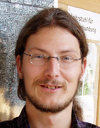
Martin Bachmann is a member of the Imaging Spectroscopy Working Group at the German Aerospace Center (DLR), German Remote Sensing Data Center (DFD). His expertise is in field and laboratory spectroscopy, and automated pre-processing and processing of hyperspectral data. For this project he provided one-on-one training to UAF researcher Marcel Buchhorn, shared expertise, and helped to set-up the hyperspectral data processing system at UAF. Read more about Dr. Bachmann at his DLR site or contact him at martin.bachmann@dlr.de

Robert Green is a senior research scientist at the Jet Propulsion Laboratory (JPL), with over four decades of active research and leadership in the field of imaging spectroscopy. He has been the AVIRIS experiment scientist from 1989 to present, science team member for 4 spaceborne and 5 airborne imaging spectrometers, and is the go-to person for imaging spectroscopy. This project has benefitted greatly from Dr. Green's advisory role and his strong professional network in the imaging spectroscopy community. Read more about Dr. Green at his JPL site or contact him at robert.o.green@jpl.nasa.gov
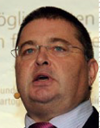
Andreas Müller is the Head of the Imaging Spectroscopy Working Group at the German Aerospace Center (DLR), German Remote Sensing Data Center (DFD). His research interest is in imaging spectroscopy of land surfaces, especially for characterizing land degradation and mining environments. He has been instrumental in connecting the UAF team with and DLRs EnMap team, and DLRs airborne hyperspectral team, a connection that UAF has greatly benefited from. Read more about Andreas Müller at his DLR site or contact him at andreas.mueller@dlr.de
| Hylab Students |
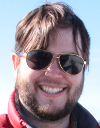
Patrick Graham is a geology graduate student who is carrying out research in remote sensing under the mentorship of Dr. Cristobal. Patrick is funded by NASAs Alaska EPSCoR ET project to provide research support for field operations and data processing. He has garnered considerable experience in hyperspectral instrument setup and deployment, and in providing field support for ground target calibration and validation during airborne hyperspectral campaigns. Patrick plans to pursue graduate studies at UAF in applied remote sensing. He can be reached at pgraham11@alaska.edu
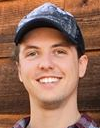
Joshua Paul is an Interdisciplinary Masters student studying permafrost soils and remote sensing. Josh is developing digital soil mapping techniques specific to permafrost soils and applying these techniques to a pilot study in Arctic Alaska along the Dalton Highway corridor. He plans to take field-based soil spectra to characterize soil properties. His advisory committee includes Dr. Anupma Prakash and Dr. Chien-Lu Ping. Josh can be reached at jdpaul3@alaska.edu.

Chris Waigl is pursuing a Ph.D. degree in geophysics with a concentration in remote sensing at UAF. Her doctoral work is focused on using remote sensing data (including hyperspectral data) and modeling techniques to better characterize Alaskan wildfires in near-real time. The main data processing toolsets she uses include free (Python, R) and commercial (Matlab, IDL) programming environments, complemented by NCL for some visualization; GIS libraries (GDAL), databases (PostGIS) and GUI tools (ArcGIS, Grass GIS); and some Fortran and C for modeling. You can contact her at cwaigl@alaska.edu
| Collaborators / Major Users (Alphabetic listing) |

Anupma Prakash is a Professor in Geophysics (Remote Sensing) at the Geophysical Institute (GI), the Director for CNSM Division of Research (CDR), and PI for NSFs Alaska EPSCoR ACE project. Her expertise is in thermal remote sensing and imaging spectroscopy for mapping surface composition and change. She serves as a member of the science study group for NASAs planned HyspIRI mission. She teaches courses in remote
sensing and GIS at UAF. For more information on her research and teaching visit www.gi.alaska.edu/~prakash or contact her at aprakash@alaska.edu.
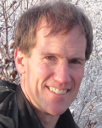
Mark Bertram has served the U.S. Fish and Wildlife Service since 1986. His career has primarily focused on inventorying and monitoring waterfowl and big game species on Alaskan refuges including the Koyukuk, Nowitna, and Yukon Flats refuges. Since 2003 his work has expanded to include abiotic inventory and monitoring with a focus on climate effects. Bertram received his training at the University of Missouri with a B.S. in Wildlife Management in 1980. He is the agency lead for the UAF-FWS hyperspectral mapping project in Yukon Flats and can be reached at mark_bertram@fws.gov
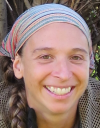
Nikki Guldager has worked as a Wildlife Biologist / Airplane Pilot for U.S. Fish and Wildlife Service since 2006. Her focus is on inventory and monitoring of biotic resources, with special emphasis on wildlife habitat and aerial survey applications for large spatial scales. For the UAF-FWS collaborative project on use of hyperspectral data to characterize wetlands and assess moose habitat quality on Yukon Flats, Nikki helped to select test-sites, set flight plans, and is assisting with image interpretation and ground validation. You can contact her at nikki_guldager@fws.gov
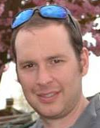
Christian Haselwimmer is remote sensing scientist with interests in the applications of remote sensing to energy and geological resource studies. He currently works as a remote sensing scientist with the Chevron Energy Technology Companies Environmental Unit. Prior to this job, he was a post-doctoral fellow at the Geophysical Institute and was originally a Co-I on this project. He put in significant base work in writing this proposal that was instrumental in establishing the HyLab facility at UAF. Dr. Haselwimmer can be reached at cehaselwimmer@chevron.com
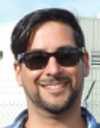
Raymond Kokaly is a USGS Research Geophysicist who specializes in spectroscopy for vegetation and mineral characterization. He created the PRISM software to archive and analyze spectroscopic data collected in the lab/field and from remote sensing platforms. In Summer 2014, he lead the airborne HyMap data acquisition for strategic minerals mapping in Alaska. Dr. Kokaly has freely shared his expertise, resources, and time and helped our team with data processing, especially for minerals mapping. Read more about his research at his USGS site or contact him at raymond@usgs.gov
Dana Brown - Graduate student, UAF
Trude King - US Geological Surveys
Mark Laker - Fish and Wildlife Services
Tom Trainor - Department of Chemistry and Biochemistry, UAF
Skip Walker - Institute of Arctic Biology, UAF
Melanie Werdon - Alaska Division of Geological & Geophyscial Surveys

